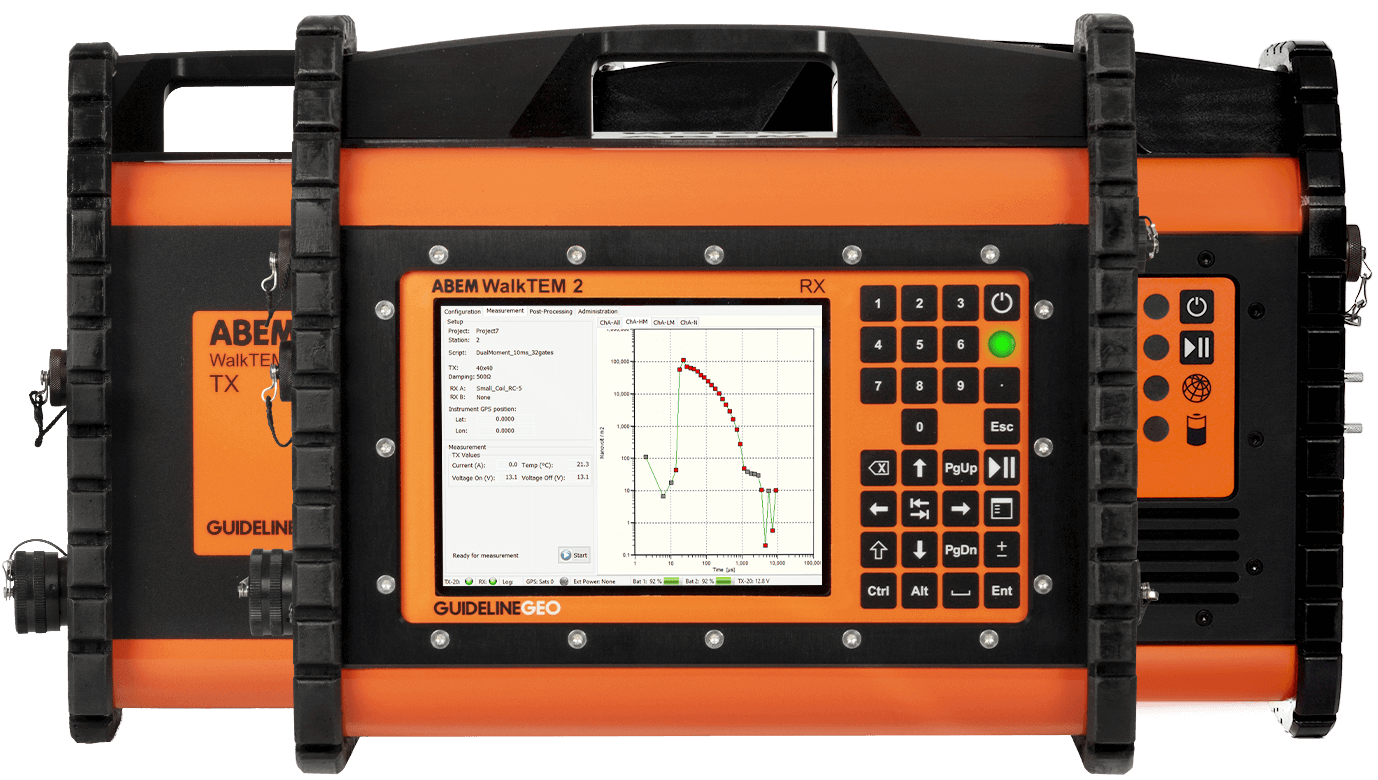
TEM (Transient Electromagnetic)
TEM (Transient Electromagnetic)
- TEM (Transient Electromagnetic) is a geophysical method used to obtain vertical resistivity measurements that is most responsive to conducting materials.
- The method is non-destructive, i.e. there is no intrusive contact with the environment, so there will be no traces left in the study area at the end of the measurements.
- The TEM procedure is extremely efficient: with just a 40 × 40 meter square transmission circuit and 1 or 2 smaller receiving coils, it is possible to achieve an eye depth of 200-250 meters.

Electro-resistance methods/induced polarization methods
VES-vertical electric sounding
Vertical electrical sounding (VES) is commonly used to solve many problems related to the estimation of groundwater, thickness, and depth of the aquifer with its different layers.
ERT (Res/IP/SP) – Electrical profiling using different measurement schemes:
Wenner Alpha / Beta / Gamma, Wenner-Schlumberger, Dipole-Dipole, Pole-Dipole, Reverse Pole-Dipole, Pole-Pole, Equatorial Dipole-Dipole, Multiple Gradient Method, Cross-Hole, Borehole-Surface, user defined configurations
RE -Resistance can be converted to resistivity, a property used to predict the composition, structure and/or strength of underlying materials. For example, different geological materials present different resistivity, the presence of water or mineral ores will usually reduce the resistivity of a material, and contaminants will also affect the recorded values. Generally, stronger and more rigid deposits will have a higher resistance associated with them than rocks with structural weaknesses.
SP- can mean self-potential or spontaneous potential. Whichever is used, it refers to a passive survey method that records the natural stresses in the ground, without injecting current from an instrument.
IP- stands for “induced polarization”. IP measures ground chargeability, in other words how the ground voltage reacts when current is applied and removed. Induced Polarization (IP) methods measure the chargeability of the earth, which as an electrical resistivity will differ depending on the current earth conditions.
Application Areas
Groundwater
High sensitivity to conductive materials makes TEM extremely useful in groundwater studies, for example differentiating between fresh, brackish and saline deposits, monitoring drawdown and recharge of an aquifer, or simply estimating its extents by building up profiles or grids of soundings.
Environmental
TEM provides a rapid means of surveying for a range of environmental applications from identifying potentially hazardous clay units within a geological sequence, to mapping and monitoring dynamic features such as permafrost thickness or pollution plumes.
Minerals
TEM responds well to conductive mineral bodies. With multi-component measurements and the ability to determine chargeability from IP effects in TEM data (using Aarhus SPIA TEM), the WalkTEM 2 is a powerful tool in the search for new mineral deposits.


